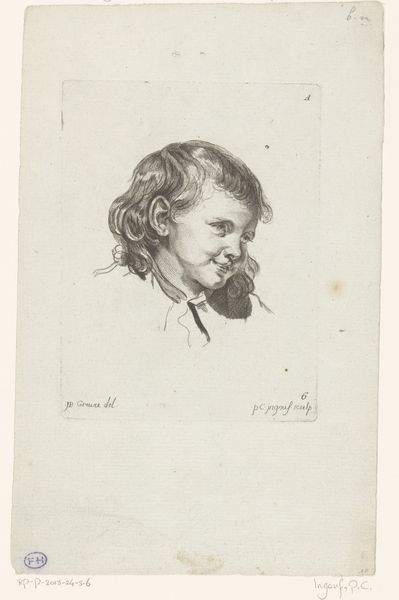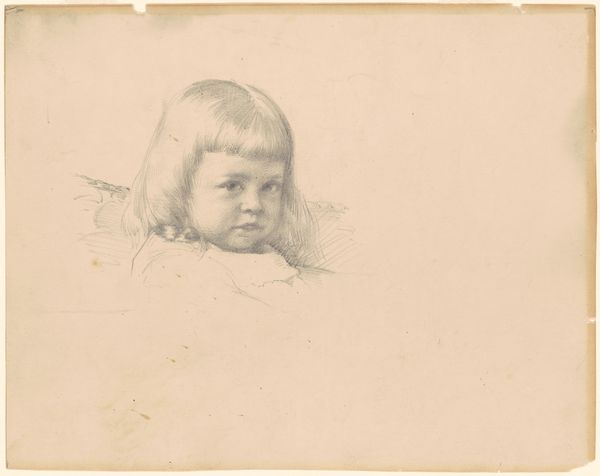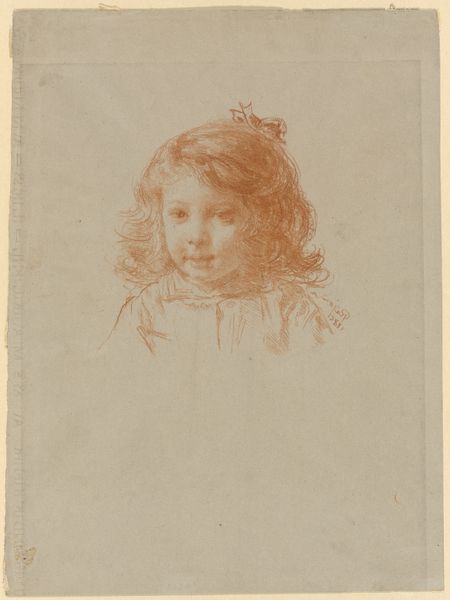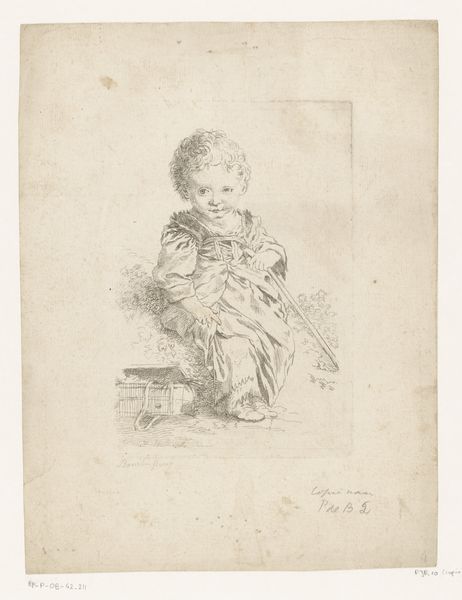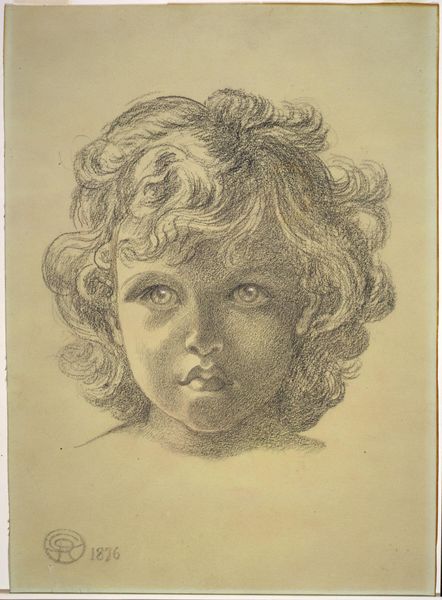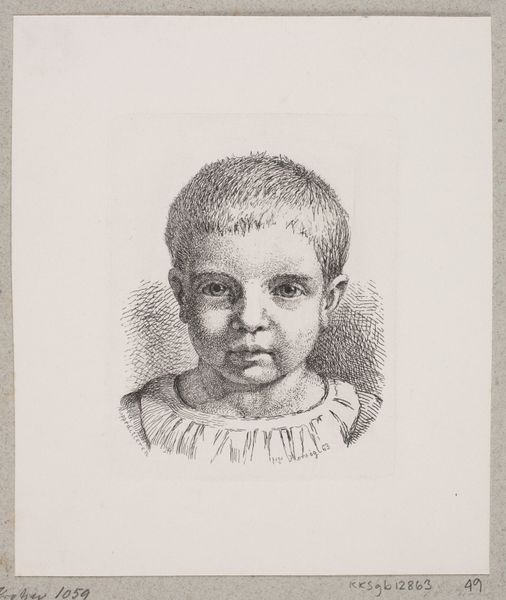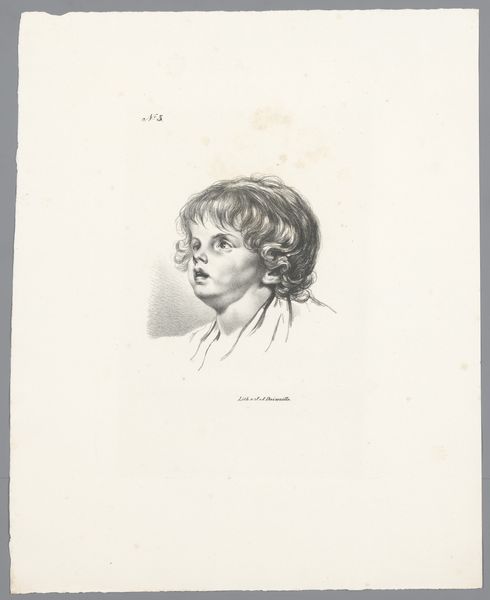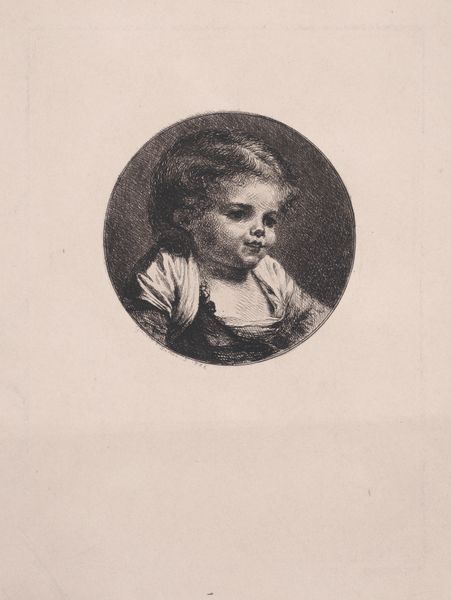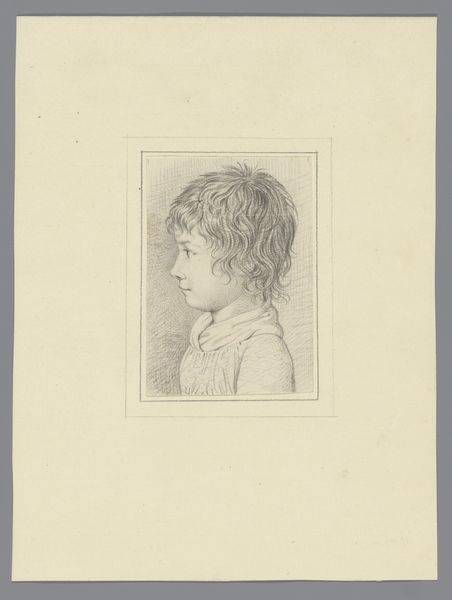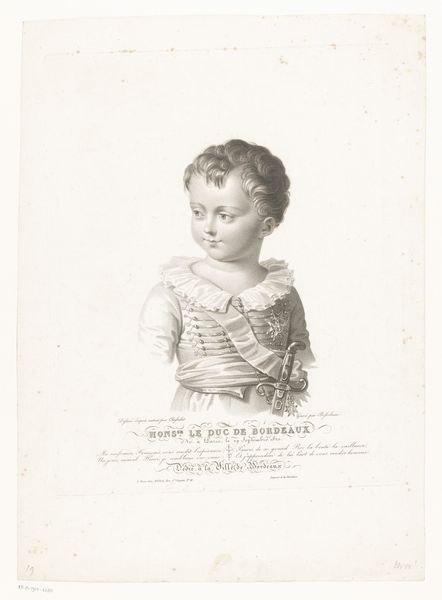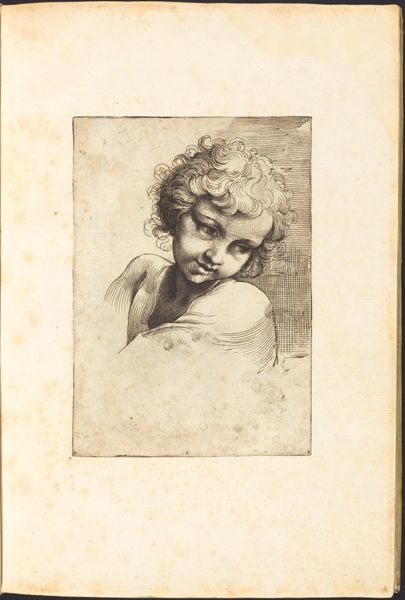
drawing, print, pencil
#
portrait
#
pencil drawn
#
drawing
# print
#
pencil sketch
#
charcoal drawing
#
figuration
#
pencil drawing
#
pencil
#
portrait drawing
#
realism
Dimensions: 158 mm (height) x 132 mm (width) (bladmaal)
Curator: Here we have "E. O. Mygind," a drawing dating from 1820 to 1906 and currently residing here at the SMK. It’s a charming figural portrait. What’s your first take on it? Editor: Initially, there’s an almost unnerving innocence to this child's gaze, rendered starkly through what looks like pencil and print work. There’s a compelling contrast between that perceived naivety and the technical skill evident in its crafting. Curator: Exactly. Consider how prints and drawings like this were produced, usually for mass dissemination. The availability speaks to societal shifts regarding the access to portraits during this time. Was art for the elite only? Were things changing? What’s your read on the potential impact this availability could have had? Editor: Absolutely. In considering that context, one could consider what impact these relatively widely available likenesses had in a world that was not yet saturated with photographic portraiture. Perhaps this type of easily reproduced artwork enabled greater social visibility for the sitter, suggesting power dynamics at play, perhaps an act of elevating the sitters perceived social importance via portrait dissemination. The context in which this was made accessible challenges typical elitist consumption. Curator: And the materials themselves – pencil and print - point to the increasing professionalization and commodification of art production. Unlike paintings which, although sometimes produced via workshops, often speak more of individual patronage and artisanal making, a drawing intended as a print speaks directly of multiples. It democratizes portraiture, yet it retains a trace of the handmade, as someone first made the drawing from which the print was made. What tensions does it represent? Editor: Indeed. The drawing holds the seed of artistic expression before it morphs through mechanical reproduction for wider availability. This interplay between individual artistry and mass-produced likeness provokes crucial discussions. I wonder: does increased accessibility diminish the perception of value or make its statements bolder? Is there a message about emerging consumer culture here? Curator: The act of reproduction invites speculation about the art market of that era and today: questions of rarity, accessibility, and how artistic value is determined continue to have significance now. It's fascinating how a simple drawing can raise so many issues. Editor: Ultimately, this piece facilitates a crucial dialogue concerning the intersection of representation, cultural production, and emerging modern societal structure during this time period. This print provides the space to re-evaluate established boundaries of artistic hierarchy while interrogating how such notions are both imposed and destabilized over time.
Comments
No comments
Be the first to comment and join the conversation on the ultimate creative platform.
